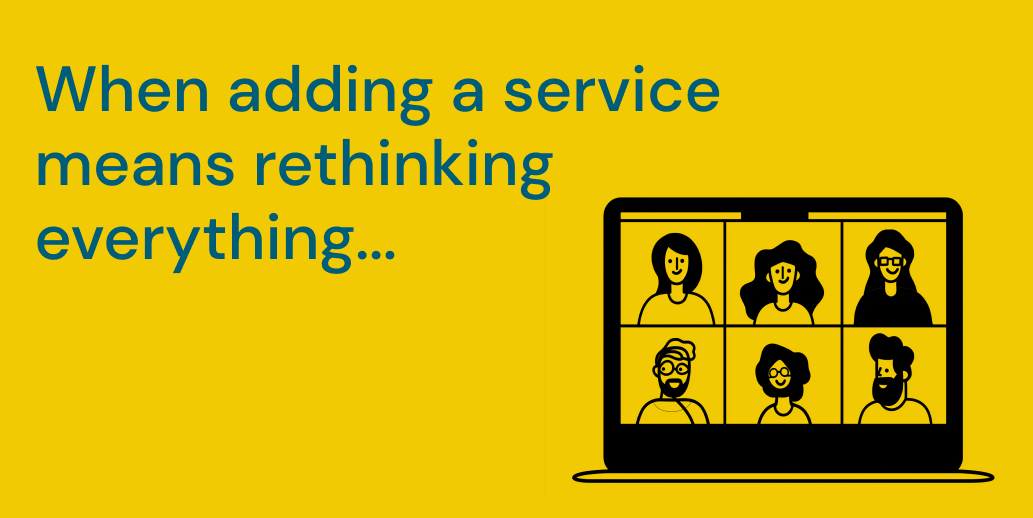
In collaboration with One Degree Impact's leadership team
One Degree Impact, a grant services company with a successful membership model, needed to integrate a new one-off project service into their digital presence. The challenge was to effectively communicate this new grant research service alongside their existing subscription-based offerings while maintaining their brand credibility and value proposition.
Duration 6 weeks (Oct'24—Dec'24)
Role UX Researcher and Designer
Team Ananya Yadav, Sophia Liu, Uraiba Zafar

The new service promised to deliver 8-12 tailored funding opportunities through a 30-45 day process, but needed proper positioning and pricing structure to resonate with potential clients. Our research focused on understanding how to effectively present both services without overshadowing their established offering.
We conducted 12 in-depth interviews with industry professionals including:
Our participant recruitment strategy spanned multiple channels to ensure diverse perspectives. We collaborated with ODI's founder to identify and reach out to past clients and industry connections. Additionally, we posted recruitment messages in nonprofit-focused Slack communities, targeting professionals involved in grant writing and management.
To further expand our reach, we conducted targeted outreach via email to relevant professional groups and nonprofit networks. This multi-channel approach helped us secure 12 qualified participants representing various roles within the grant services ecosystem.
Our interviews centered on understanding how industry professionals perceived and valued grant research services. We explored their comprehension of ODI's new offering and gauged overall interest in a standalone service model.
Experience and Background
Pain Points and Challenges
Current Process Understanding
Success Metrics and Goals
This semi-structured approach allowed conversations to flow naturally while ensuring we covered all crucial aspects of the grant service experience. The flexibility proved particularly valuable when interviewing participants with varying levels of expertise, from seasoned grant writers to those new to the process.
Before showing ODI's service page, we asked participants:
This approach helped us gather unbiased expectations before participants viewed the actual service offering.
After establishing baseline understanding of participants' expectations, we transitioned to evaluating ODI's service page with a focused set of questions:
During Page Review:
We specifically probed for missing information and areas of confusion:
Closing Questions:
These questions were crucial for understanding practical implications and potential adoption:
This structured yet flexible approach allowed us to:
The progression from open-ended exploration to specific evaluation helped participants articulate their thoughts more effectively and provided clear, actionable insights for our redesign.
Prior to each interview, participants were sent a digital consent form outlining the research purpose, data usage, and recording permissions. We ensured all forms were completed and submitted before proceeding with the interviews, maintaining ethical research standards while protecting participant privacy and data rights.
Our research revealed several critical findings that informed our design decisions:
Research findings from 12 in-depth interviews with industry professionals
Users struggled with flat-rate pricing
Participants questioned why different sized grants would have identical pricing
Initial pricing created hesitation
All participants wanted clearer value demonstration before committing
Trust signals needed prominence
Participants wanted to see expertise and track record earlier in the journey
Needed quantifiable results
Participants wanted clear ROI demonstration before considering the service
We created five distinct prototypes testing various elements:
Our user research revealed several critical issues that needed to be addressed to successfully integrate the new service:
Our research and design process involved several critical pivot points that shaped our final recommendations and the presentation of ODI's services.
Initial challenge came from ODI's need to incorporate their new one-off service alongside their existing membership model. The research focused on understanding how to effectively present both services without cannibalizing their established offering.
Through user feedback, we discovered significant confusion around differentiating the two services. Users struggled to understand the distinction between the membership model and the new one-off strategic service, leading us to refine the presentation of both offerings.
User research showed that credibility was a primary concern. We restructured the page to move trust-building elements (experience metrics, client testimonials, and track record) to more prominent positions.
Our exploration of pricing approaches revealed two significant challenges. First, user interviews showed strong negative reactions to the displayed flat-rate price. Second, while considering percentage-based pricing, we learned this conflicted with the Grant Professionals Association's code of ethics.
Through multiple iterations, we refined the layout and visual hierarchy to better communicate both services. This included testing various arrangements of graphic elements to enhance understanding and build trust through visual design.

Scroll to view full page
Final layout with improved visual hierarchy
The redesigned service offering page better reflected ODI's expertise while addressing key user concerns about pricing and value. The new structure helped potential clients better understand the distinct benefits of both the membership and one-off service models.
In presenting our findings to Jessica Merrell, ODI's founder, we encountered a leader genuinely eager to learn from user research. Unlike many founders who might view feedback as criticism, Jessica embraced the insights with enthusiasm and openness. During our final presentation, she noted, "Having market research to build decisions off of is great... having an outside perspective, supported by data and insights and for you to have come with solutions is amazing." Her response demonstrated a true commitment to user-centered improvement, as she planned to take our report back to her team to thoughtfully consider which recommendations to implement.